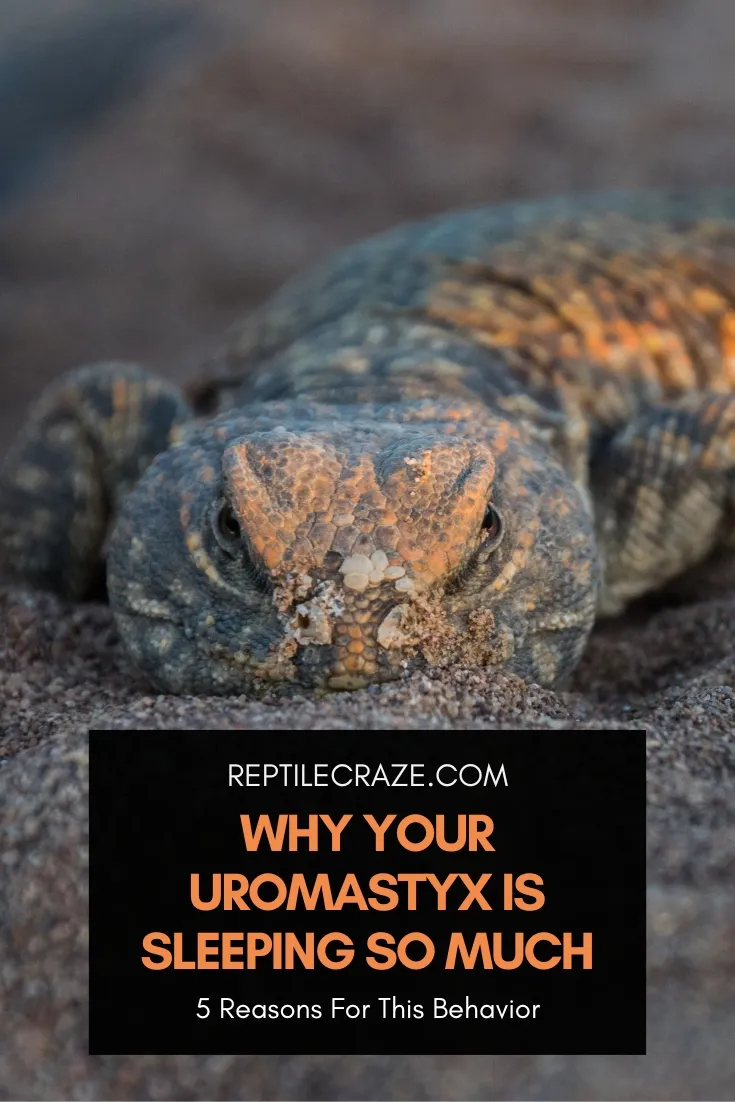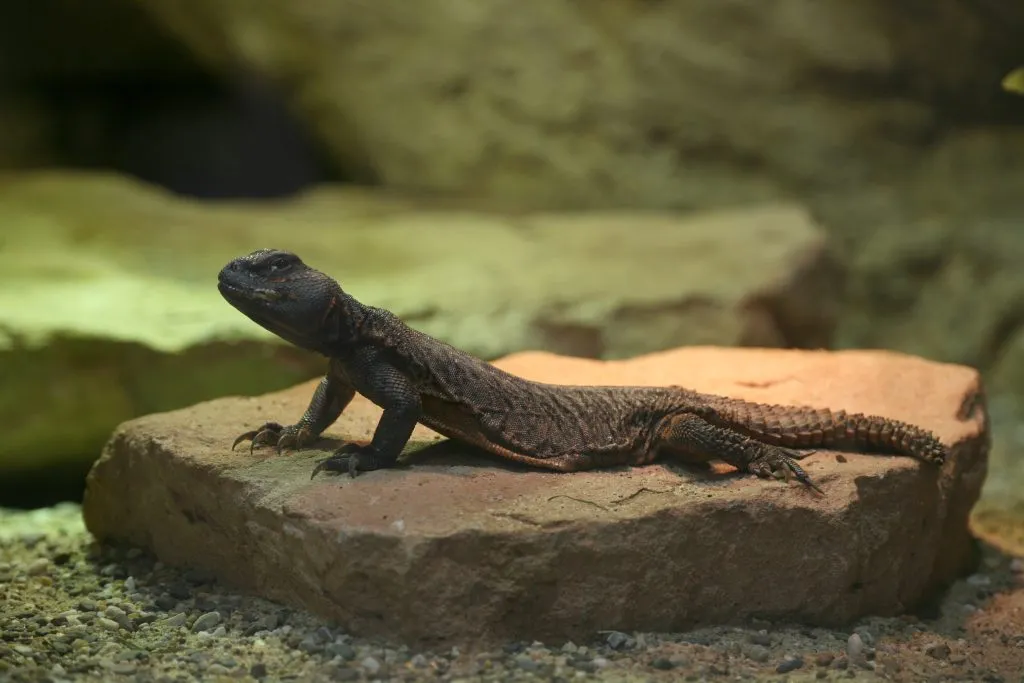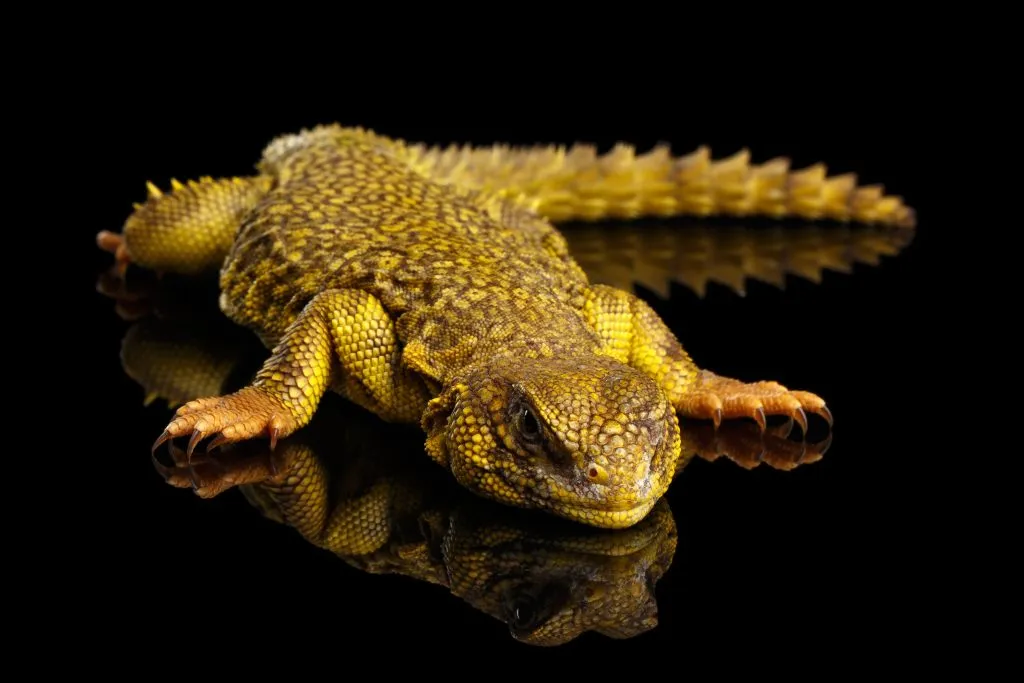
Do you have a Uromastyx, and it is sleeping all the time? If your Uromastyx appears inactive, disinterested, and sleeping more than usual, there are a few reasons.
Uromastyx sleep a lot during brumation, when they are injured, infected with parasites, or if the temperatures in their enclosures are too low. Other reasons for unusual sleeping patterns are stress and fear of new surroundings or
Do you want to find out why your Uromastyx sleeps so much and if it is normal? Stay alert to continue reading for the answers.
Table of Contents
Why is My Uromastxy Sleeping So Much?
Your Uromastyx is sleeping more than usual, and you don’t know why. You run through the list of possibilities but need help pinpointing the reason. This dozing could be due to the following:
- Brumation
- Illness
- Fear of new surroundings
- Habitat temperature is too low
When you learn more about your companion, you will see that there are times when sleeping is normal, and illness is not always the answer.
Uromastyx Brumate During the Winter

If it is winter and your Uromastyx sleeps a lot, it is likely due to brumation. Brumation is a period of dormancy in which the animal’s physiological processes slow down.
Brumation is necessary for the reptile to survive because they cannot raise their body temperature in the winter. Brumation in reptiles is similar to hibernation in mammals. Your Uromastyx may come out briefly for:
- Food
- Water
- Bask
- Roam
You should track their weight during this time to ensure they have not lost too much. It is essential to provide your Uromastyx with a safe, climate-controlled area during this time.
The best temperature for brumation is between 40 – and 50 degrees Fahrenheit. During brumation, your Uromastyx eat less or not at all, and their metabolism and digestion slow down.
If you see your Uromastyx brumating in the winter, do not worry; it is a natural process and is safe and healthy for them. Their bodies let them know when the temperature outside becomes colder and the days shorter.
Brumation usually lasts about one to four months during the winter, and it is the most common reason for Uromastyx to sleep a lot.
Your Uromastyx Does Not Feel Well
Sometimes if a Uromastyx is sick or in pain, they may sleep a lot to allow their body to heal. They will likely be inactive and lethargic.
They could also be experiencing diarrhea or impaction. Some of the possible reasons your Uromastyx is sleeping a lot:
- Injury
- Infection
- Parasites
- Vitamin deficiencies
Dehydration is another common problem in Uromastyx. They will become sleepy and inactive and exhibit cloudy eyes and withered skin.
To hydrate your sleepy Uromastyx, provide them with nourishment and hydration from leafy greens that contain a high water content, such as lettuce.
If your typically active Uromastyx has stopped their normal behavior, such as climbing and digging, they may be sick, making them sleep more.
Uromastyx is naturally curious and active, so a Uromastyx that demonstrates disinterest in exploring its cage is a sign it may be sick and lethargic.
When a Uromastyx is sick, they may also choose not to eat. This eating cessation, sleeping all the time, and inactivity can be concerning.
If you see signs of lethargy, no interest in moving around, and a lack of appetite, they could be sick and may benefit from a visit to the vet.
Tip: If you need help with taking proper care of your uromastyx, read our care guide here!
Low Temperatures Can Cause Lethargy

Uromastyx cannot regulate their body temperature without the presence of heat. If its environment is too cold, the uromastyx will not have the energy to climb around and do fun lizard activities.
The cage should have a basking temperature of around 120 degrees Fahrenheit. Your uromastyx
Poor lighting can also cause your Uromastyx to sleep a lot or become inactive. They require sufficient lighting to be able to thrive.
Your lizard should also have access to the sun as much as possible or to UVB lights, which is way more common. We highly recommend getting the Exo Terra Solar Glo as it doesn’t only provide UVB but also heat.
You Got A Wild-Caught Uromastyx
Wild Uromastyx come from parts of the world with warmer climates:
- Southwestern Asia
- Northwestern India
- Northern Africa
- Middle East
Since wild Uromastyx come from warmer climates, they are used to burrowing themselves and sleeping under the sand or in caves after basking until it is time to bask and get some
If you got a wild-caught uromastyx, you might see this behavior more often than a person who got a captive-bred uromastyx.
The Uromastyx is Afraid or Stressed
You may have just got a Uromastyx as a pet, and they have yet to get used to you. A new person and new surroundings may frighten them and cause them to tentatively hide or burrow to conceal themselves, and they may sleep more.
Your Uromastyx may be shy and need about a month to start to feel secure in their surroundings. If your Uromastyx is a new pet, leave it alone for a few days to acclimate to its environment.
Tip: If your Uromastyx is a new pet, leave it alone for a few days to acclimate to its environment.
Try to keep your Uromastyx stress free, as stress could be a significant factor in whether they choose to hide and be inactive. They may not necessarily sleep. However, they may avoid exercise and generally become lethargic.
Another reason your Uromastyx may be stressed could be due to too much handling too soon. If you just got your Uromastyx, wait until they come to you to handle them, or it could cause them undue stress.
Tip: If uros are annoyed, they start wiggling. Read our article here if you have seen this behavior in your uromastyx!
Conclusion
Uromastyx is known to be alert and active lizards. If your Uromastyx sleeps a lot, the common reasons are brumation, sickness, or low cage temperature. However, they could also have been caught in the wild, or it could be due to fear or stress.
If you suspect illness, watch for signs of anything unusual with your Uromastyx and promptly get them to the vet.
- Eastern Rat Snake: Nature’s Pest Control and Fascinating Reptile - September 20, 2024
- Eastern Racer: The Fast and Agile Snake - September 19, 2024
- The Eastern Indigo Snake: The Majestic, Non-Venomous Hunter of the Southeast - September 18, 2024
